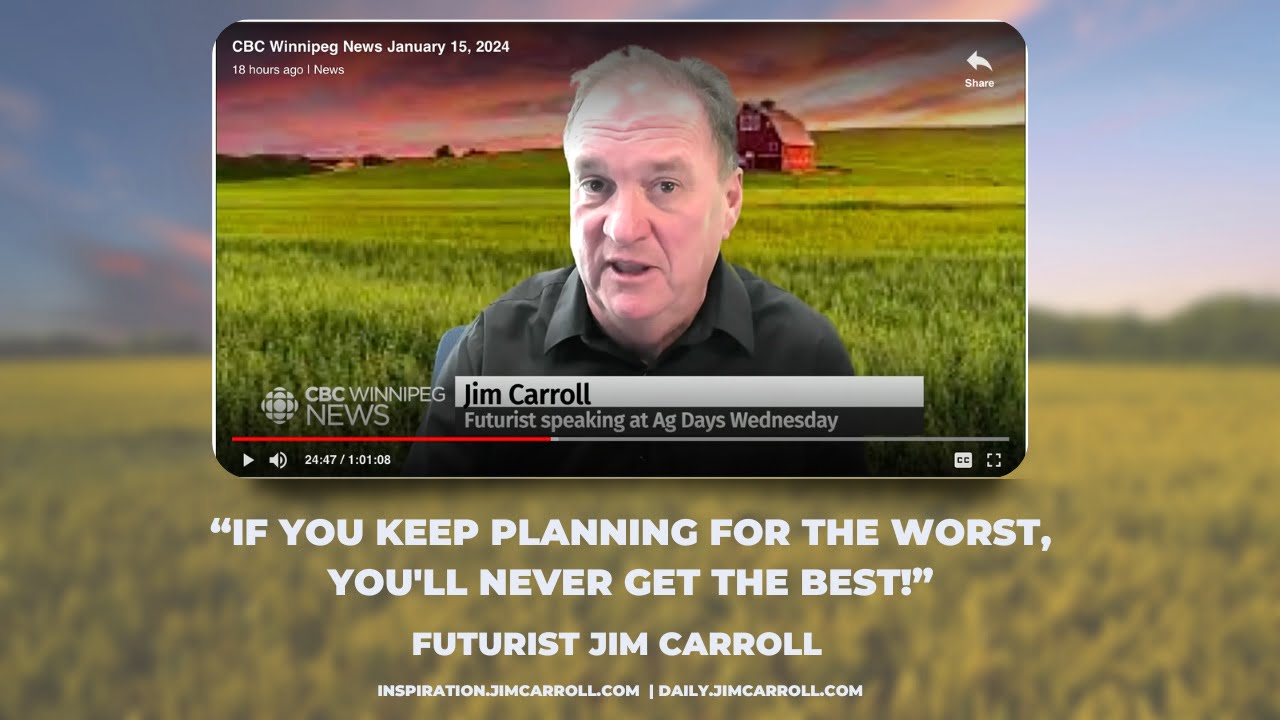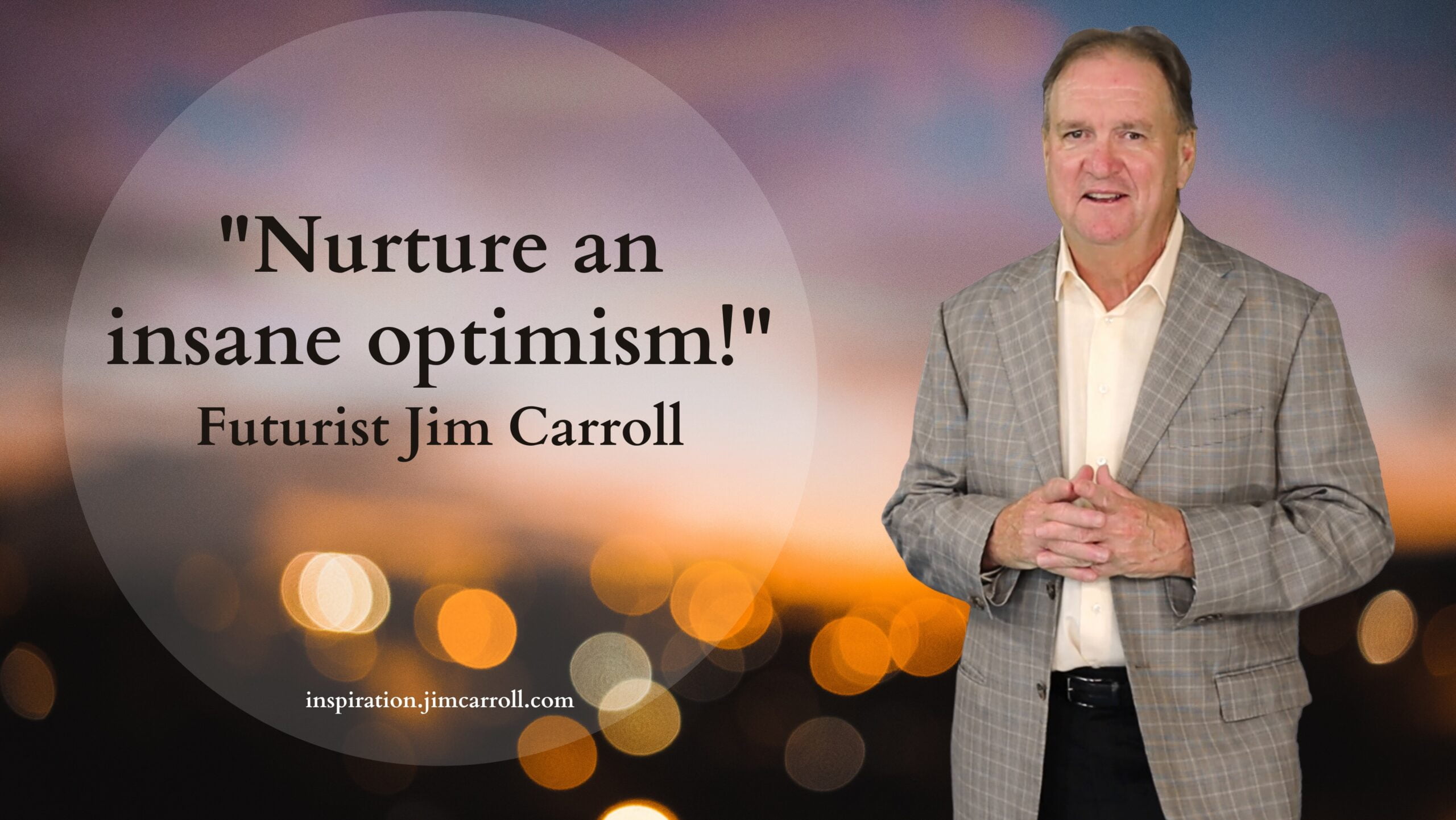“If you keep planning for the worst, you’ll never get the best!” – Futurist Jim Carroll

I like optimists. That means I like farmers – because farmers are the ultimate optimists!
With that in mind, I will be speaking later today in Brandon, Manitoba, at the annual Manitoba AgDays show, which bills itself as Canada’s largest indoor farm show. (It will be a lovely day with an early morning temperature of -25C.)

My focus will be on the role and potential impact of AI within the sector, and I did a short interview with CBC Winnipeg the other day in advance of the talk.
So why are farmers so optimistic? The first thing to keep in mind is that it is only some of them – usually the majority depending on the region – are positive, while many others are quite negative about everything. I covered this last November in my Daily Inspiration – “Develop an Insane Level of Optimism.”

In that post, I noted that the typical farmer must be insanely optimistic at all times – particularly in the face of relentless volatility with weather, yield, politics, global demand, and more. And I noted that I will often tell the story that there are two different types of farmers.
The first type of farmer is what we might call the ‘apathetic minority’, who share these attributes:
- they are not optimistic about the future
- they tend to seek the “same old advice” from the “same old sources”
- they have a high intolerance for risk
- they’re not convinced they can continue to make a comfortable living despite all the contrary evidence
- they’re skeptical of their potential since they feel they’ve seen too many ups and downs in the industry
Then there is the second group we might call the ‘future positive‘ type of farmer. They share these attributes :
- they’re quite optimistic about the future
- they’re very business-minded, using all the latest tools and ideas at their disposal
- they are very innovation-oriented, willing to approach everything in a new way with new ideas
- they are very collaborative for advice, seeking ideas from anyone and everyone
- they’re often focused on planning, profit, and growth, with clear objectives in mind
So here’s a good question: when it comes to you, or the organization that work for, what type of farmer are you?
What’s the basis for the optimism of the second group? How can they be so optimistic in what is a relentlessly volatile industry?
There are several things. They’ve got a deep connection with nature, and understand and come to accept the natural ebb and flow of the weather, the seasons, and the natural cycles of the hand they are dealt. They learn to deal with what comes at them and adjust their actions and plans accordingly. They’ve got resilience – they are constantly battling the volatility that comes with changing conditions, such as weather patterns and the agricultural market demands, And they’ve got patience – it’s a long-term game. They plant their crops months before they see the return on their work, and learn to deal with the uncertainty. They come to accept their reality and have learned to work within it.
There is a lot we can learn from farmers like this, because they are, at the heart of it, always nurturing and growing a mindset of optimism. With that, I’ll go into my talk today with my farmer hat on (an image generated by an AI, of course!)

That mindset became the genesis for today’s inspiration – if you think about a farmer, they don’t sit around waiting for the worst to happen – they are of a mindset that they are always waiting for the best to happen. That’s the core of their optimistic mindset, and there is so much we can learn from them.
Because if you keep planning for the worst, you’ll never get the best!




GET IN TOUCH
Jim's Facebook page
You'll find Jim's latest videos on Youtube
Mastodon. What's on Jim's mind? Check his feed!
LinkedIn - reach out to Jim for a professional connection!
Flickr! Get inspired! A massive archive of all of Jim's daily inspirational quotes!
Instagram - the home for Jim's motivational mind!